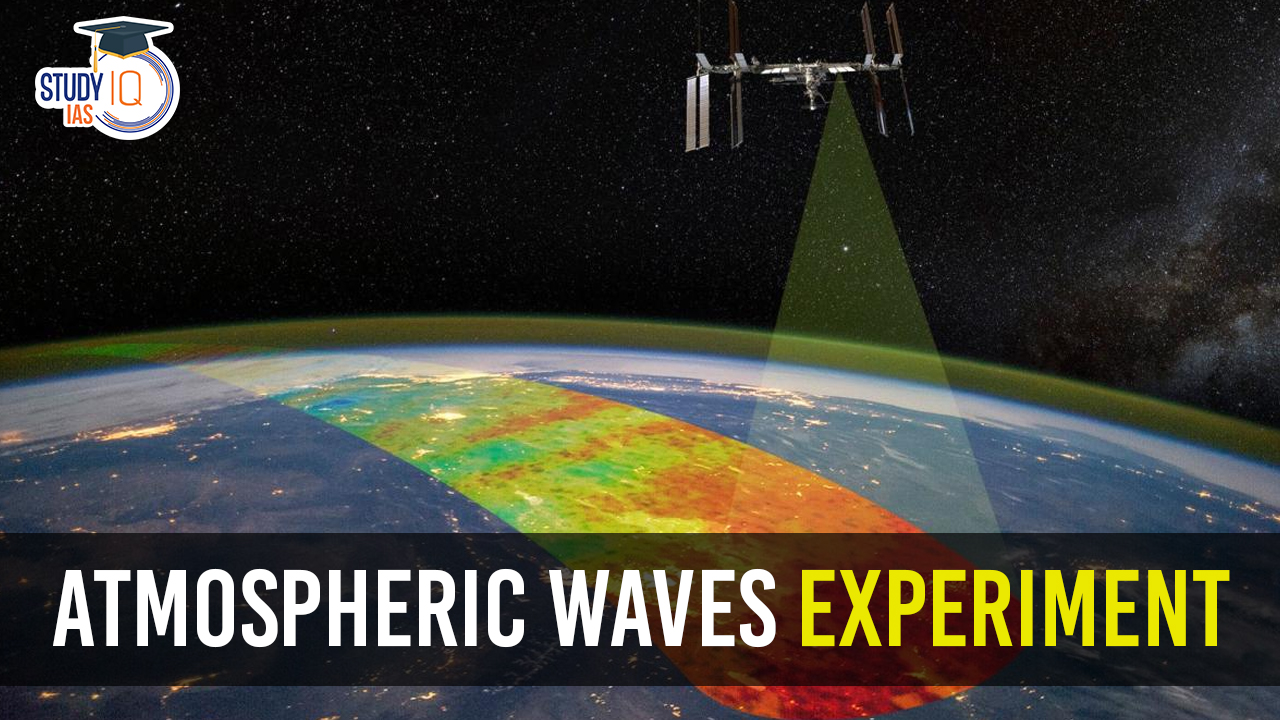Table of Contents
Context: NASA has launched the Atmospheric Waves Experiment (AWE).
Atmospheric Waves Experiment (AWE)
Atmospheric Waves Experiment (AWE) is NASA’s innovative experiment aimed at studying the interactions between Earth’s atmospheric weather and space weather. This investigation is a key part of NASA’s Heliophysics Explorers Programme.
Atmospheric Waves Experiment Mission and Location
The Atmospheric Waves Experiment mission’s primary focus is to understand how waves in Earth’s lower atmosphere affect the upper atmosphere and space weather. AWE will be attached to the exterior of the International Space Station (ISS), giving it a unique vantage point to observe Earth.
We’re now on WhatsApp. Click to Join
Observation of Airglow
A significant aspect of the Atmospheric Waves Experiment (AWE) is the observation of airglow, the colourful light bands in Earth’s atmosphere. The mission will specifically target the airglow at the mesopause, around 85 to 87 kilometres above Earth, where temperatures are as low as minus 100 degrees Celsius.
| What is Airglow? |
|
Technical Capabilities and Innovations
One of the unique features of AWE is its ability to resolve atmospheric waves at finer horizontal scales at high altitudes. The mission includes the Advanced Mesospheric Temperature Mapper (ATMT), equipped with four identical telescopes, forming an imaging radiometer to capture the brightness of light at specific wavelengths.
Importance of the Ionosphere and Communication
The Atmospheric Waves Experiment mission emphasises the importance of the ionosphere’s health, located at the edge of space, which is crucial for seamless communication systems.
AWE’s Approach to Mapping Airglows
AWE is tasked with conducting a detailed mapping of the atmospheric airglows. The data collected will be used to create temperature maps, revealing movements of airglow and their influence on the upper atmosphere and space weather.
What is Space Weather?
Space weather encompasses the conditions and disturbances in space that can impact Earth and its technological systems. Key phenomena of space weather include solar flares, coronal mass ejections (CMEs), and solar energetic particle events. These events can disrupt the Earth’s magnetosphere, ionosphere, and thermosphere, affecting satellite operations, communication networks, and power grids, and posing risks to astronauts and high-altitude flights. Additionally, space weather is influenced by both emissions from the Sun and terrestrial weather conditions.
Atmospheric Gravity Waves (AGW)
Atmospheric Gravity Waves are initiated by extreme weather events or sudden disturbances that displace stable air vertically. They often arise from natural occurrences such as thunderstorms, hurricanes, and tornadoes, as well as geographical features. AGWs occur when stable air is displaced due to temperature differences, creating wave patterns. These waves can extend to space, impacting space weather. It is crucial for insights into their effects on Earth’s weather and climate.
Difference Between Airglow and Auroras
Airglow and auroras, while occurring at similar altitudes, originate from different mechanisms:
- Airglow is produced by chemical interactions among oxygen, nitrogen, and other molecules in the upper atmosphere.
- Auroras are caused by solar energy interacting with Earth’s magnetic field.
Furthermore, unlike the localised and intermittent nature of auroras, airglow is a constant phenomenon that occurs across the entire Earth.


 SSC MTS Salary 2025, Check Highest Salar...
SSC MTS Salary 2025, Check Highest Salar...
 F-35 Fighter Jet Stranded in Kerala: Dis...
F-35 Fighter Jet Stranded in Kerala: Dis...
 Quad Summit 2025: Key Announcements, Str...
Quad Summit 2025: Key Announcements, Str...





















